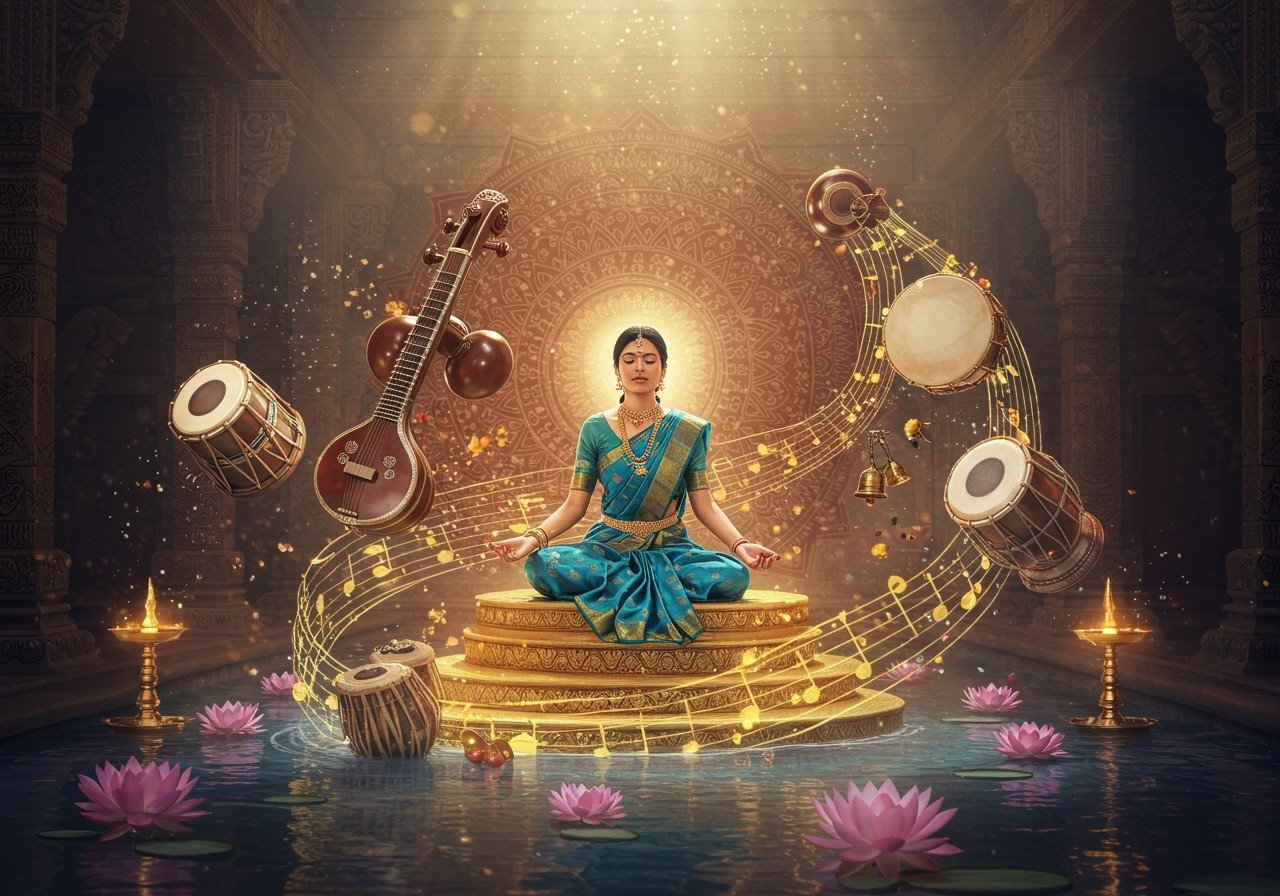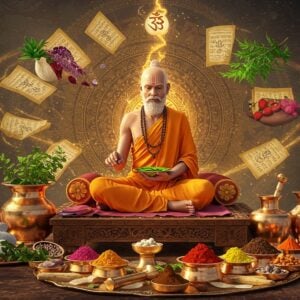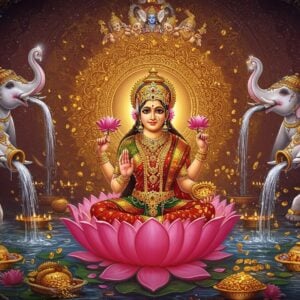Exploring the Divine Sounds of Indian Classical Music

Indian classical music, a tradition as rich and ancient as India itself, is more than just a melodic art form. It’s a spiritual journey, a vibrant expression of devotion, and a cornerstone of our cultural heritage. This exploration delves into the heart of this captivating musical tradition, revealing its history, core elements, and profound impact on our lives. At poojn.in, we honor this tradition by providing you with access to authentic instruments and ritual items, allowing you to bring the sacred sounds into your home.
Shastriya Sangeet: A Symphony of Raga and Tala
Indian classical music, often referred to as Shastriya Sangeet or Marg Sangeet, rests on two fundamental pillars: raga and tala. Imagine a raga as the melodic blueprint, a carefully chosen sequence of notes (swaras) that creates a specific mood or emotion. It’s like a painter’s palette, offering a rich array of musical colors for the artist to explore. Tala, on the other hand, is the rhythmic heartbeat, the time cycle that guides the flow of the music. Each beat, or matra, is a precise unit of time, creating the rhythmic framework for improvisation and expression. It’s the rhythmic pulse that makes your feet tap and your heart sway.
A Legacy Woven in Time
The roots of Indian classical music trace back to the ancient Vedic scriptures, over 6,000 years old. The chants and hymns of these sacred texts, passed down through generations, gradually evolved into the musical notes and rhythmic cycles we know today. The Samaveda, one of the four Vedas dating back to around 1000 BCE, is particularly noteworthy. It’s essentially a musical scripture, structured entirely around melodic themes. Even sections of the Rigveda were set to music, demonstrating the ancient connection between sound and spirituality. The Natyashastra by Bharata Muni, a foundational text for Indian classical music and dance, offers insights into the theory and practice of ancient music. Then came the Sangeeta-Ratnakara, a 13th-century Sanskrit text by Sarangadeva. This comprehensive work is revered as a definitive guide for both Hindustani and Carnatic music, cementing the theoretical framework of our musical tradition.
Two Streams, One Source
Indian classical music flows in two main streams: Hindustani from the North and Carnatic from the South. Though distinct in style, they share a common ancestry. While the North Indian Hindustani tradition embraced Persian influences during the Mughal era, emphasizing improvisation and exploration within a raga, the South Indian Carnatic style retained a stronger focus on structured compositions, often shorter and more melodically driven. Though these two traditions weren’t clearly distinct until around the 15th century, they offer a beautiful example of how a shared heritage can blossom into diverse forms of expression.
The Essence of Indian Classical Music
Melody, rhythm, and harmony form the essence of Indian classical music. While melody, built on the raga system, takes center stage, rhythm plays a crucial role, adding texture and depth to the music. Harmony, often created by the gentle drone of the tanpura, weaves a rich sonic tapestry. This instrument plays a constant stream of the tonic (Sa) and the fifth (Pa) or fourth (Ma), creating a calming and grounding effect.
The Raga: A Musical Journey
Imagine a raga as a musical story. The artist selects a raga and then, through improvisation and mastery, creates a vivid soundscape for the audience. These performances can be lengthy, often improvised, but always guided by the structure of the chosen raga. Refrains offer a framework, like landmarks on a journey, giving the music a sense of familiarity within its expansive improvisation. A raga must have at least five notes and must include the tonic (Sa) and either Ma or Pa, creating the basic melodic foundation.
Guru-Shishya Parampara: A Timeless Tradition
The knowledge of Indian classical music has been traditionally passed down through the Guru-Shishya Parampara, the sacred teacher-disciple tradition. Students dedicate years, sometimes decades, to learning from their gurus, absorbing not just the technical skills but also the emotional and spiritual nuances of the music.
Instruments of Devotion and Expression
The instruments used in Indian classical music are more than just tools; they are extensions of the musician’s soul. In Hindustani music, the sitar, sarod, and tabla are prominent, while Carnatic music features the veena, venu, and mridangam. Each instrument has its unique voice, contributing to the rich tapestry of sound. You can find a selection of these traditional instruments on poojn.in, allowing you to bring the sacred sounds into your home. Explore our blog post on Bhajans and Kirtans for a deeper dive into the rich traditions surrounding devotional music.
Are you just beginning your yoga journey? Discover simple poses and an easy introduction to yoga in our beginner’s guide.
Beyond the Notes
Swaras, the seven primary notes (Sa, Re, Ga, Ma, Pa, Dha, Ni), form the building blocks of melody. Alankar, intricate ornaments and embellishments, add expressiveness and depth, bringing the music to life. Techniques like meend (glides), murki (trills), and gamak (tremolos) are used to enhance the emotional impact. And then there’s the Gharana culture, where specific ragas or instruments are practiced within families for generations, preserving unique styles and traditions. Learn more about sacred offerings in Hindu rituals and their significance in our detailed guide.
Bringing Sacred Sounds Home with Poojn.in
At poojn.in, we understand the importance of having authentic and high-quality items for your spiritual practices. Whether you’re a seasoned musician or just starting your exploration of Indian classical music, we offer a wide range of instruments, accessories, and ritual items to enhance your experience.
- Traditional Instruments: Find exquisitely crafted sitars, tablas, veenas, and more, sourced from skilled artisans across India. We ensure each instrument is made with the finest materials and tuned to perfection.
- Puja Items: Enhance your spiritual practice with our collection of brass bells, conch shells, incense holders, and other essential puja items, all crafted with reverence and attention to detail.
Looking for the perfect Rakhi for your brother? Explore our collection of traditional Rakhis and premium Rakhi sets. Poojn.in also stocks other essential products for your home, including puja materials and high-quality herbs, like our 100% Fresh Natural Chirayta Bittersticks and other flammables required for your puja.
Visit poojn.in today and embark on a musical journey that nourishes your soul and connects you with the divine.


